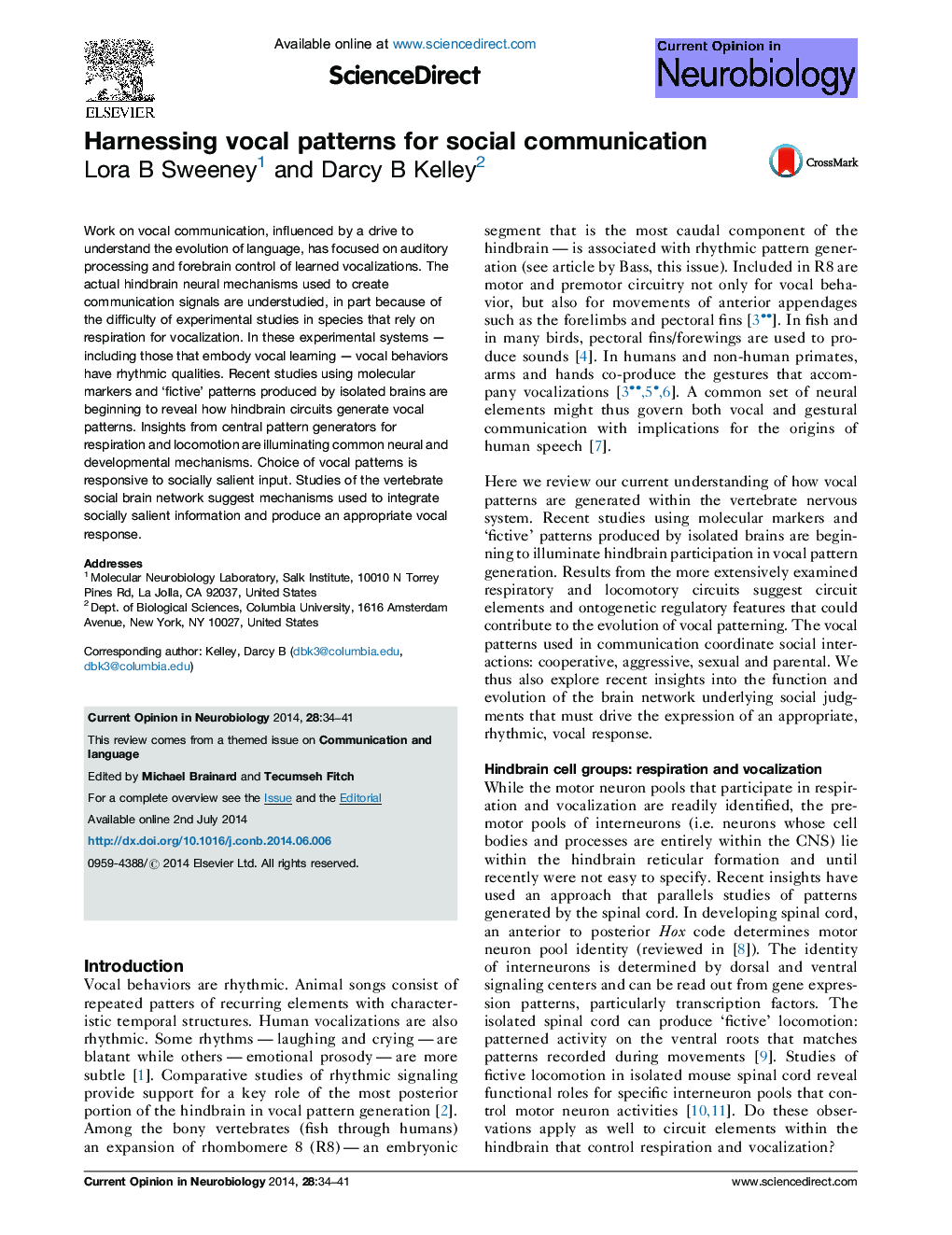| Article ID | Journal | Published Year | Pages | File Type |
|---|---|---|---|---|
| 6266655 | Current Opinion in Neurobiology | 2014 | 8 Pages |
•A hindbrain and spinal cord ‘toolkit’ for rhythmic vocalization, respiration and locomotion.•Neurons express the same transcription factors and neurotransmitter-related genes from fish to mouse.•Sites of action for hormones and modulators can be distinguished using fictive behaviors.•The ancient social decision making neural network (SDN) participates in vocal communication.•Molecular underpinnings for the SDN include conserved hormone and neuromodulator receptors.
Work on vocal communication, influenced by a drive to understand the evolution of language, has focused on auditory processing and forebrain control of learned vocalizations. The actual hindbrain neural mechanisms used to create communication signals are understudied, in part because of the difficulty of experimental studies in species that rely on respiration for vocalization. In these experimental systems — including those that embody vocal learning — vocal behaviors have rhythmic qualities. Recent studies using molecular markers and ‘fictive’ patterns produced by isolated brains are beginning to reveal how hindbrain circuits generate vocal patterns. Insights from central pattern generators for respiration and locomotion are illuminating common neural and developmental mechanisms. Choice of vocal patterns is responsive to socially salient input. Studies of the vertebrate social brain network suggest mechanisms used to integrate socially salient information and produce an appropriate vocal response.
